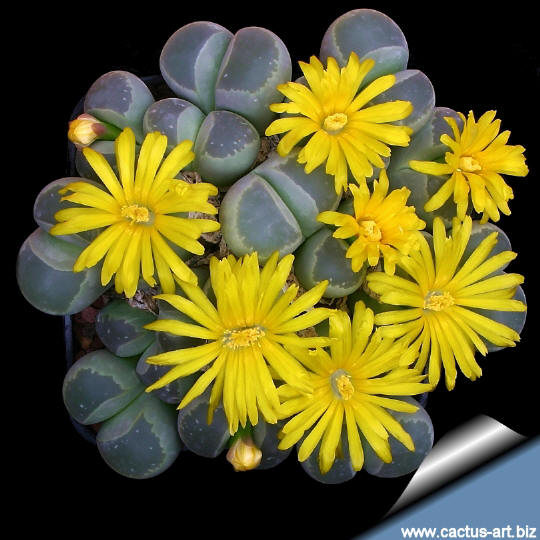|
Family: Mesebrianthemaceae (Aizoaceae)
Scientific name: Lithops olivacea L. Bol. 1929
var. olivacea
Common English Names include: Stone plant, Green stone
plant, Living stone.
Origin: The two
varieties of L. olivacea (var. olivacea and var.
nebrownii) are restricted and occur sporadically in Bushmanland,
and are found most abundantly however in the region of Aggeneys,
Pofadder and Namies, although there are earlier collections far to the
east from the Kakamas area, where it has not been seen in recent
times.
Habitat and
Ecology: L. olivacea is a
quartz lover and will always be found growing either on big outcrops
of quartz or more commonly on quartz plains where the quartz pebbles
protect the plants from the blazing summer sun by reflecting a lot of
the light and heat. Its hard
translucent gloss closely resembles the white quartz crystalline
rubble of its
habitat. Another
succulent plant that is almost always found growing with L.
olivacea is Avonia
papyracea, which loves quartz too. In times of
drought the plants shrivel and are almost invisible, as they get
covered with fine wind-blown
sand. After
rain, however, they
absorb water and become fat and
turgid. There is a considerable correlation between the colour of
different
populations and the nature of their
habitats. For example L. olivacea, which is more red-brown, green-brown in
appearance in its westerly locations, becomes yellower in the
dry season and more purplish-red-grey further north. The more
widespread a
taxa, the more there is
variation
within that taxa.

|